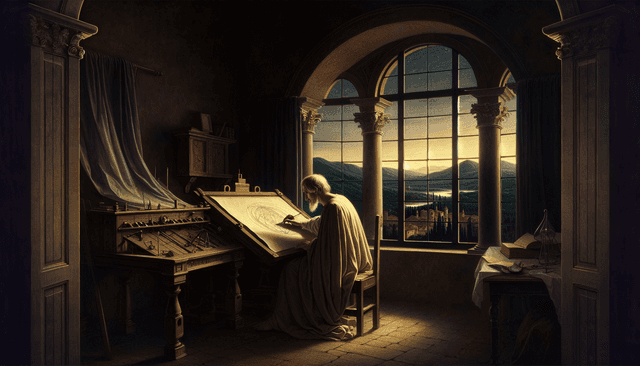Table of Contents
If you’ve ever stared at a blank page wondering how to bring history to life, you’re not alone! Many aspiring writers struggle with finding fresh angles for historical fiction that feel vibrant and compelling. It can be daunting to think about melding real events with imaginative storytelling while keeping everything authentic.
But don’t worry! This guide will help you unlock a treasure trove of innovative ideas and inspire you to spin captivating tales rooted in the past. With just a few unique prompts and tips, you’ll be able to craft narratives that not only entertain but also educate your readers.
From themed settings that transport you to different eras, to hidden moments in history begging for exploration, we’ll cover a variety of creative avenues. So grab your quill (or laptop) and let’s dive into the world of historical fiction together!
Key Takeaways
- Brainstorm fresh angles on historical events or figures to create unique narratives.
- Use vivid, sensory details and authentic research to enhance your setting.
- Draw inspiration from lesser-known historical figures for character development.
- Build plots around significant real events to capture emotional depth.
- Consider famous historical figures as protagonists, focusing on their lesser-known stories.
- Explore lesser-known historical moments for unique storytelling opportunities.
- Mix genres, like romance and mystery, but maintain core historical context.

Creative Historical Fiction Ideas
Writing historical fiction can be a thrilling journey that mixes creativity with the richness of the past.
To get started, try brainstorming unique angles on well-known historical events or figures.
For instance, what if you took a minor character from a historical event and explored their life story?
You could also set your story in a less commonly covered period or region, shedding light on events that haven’t been fully explored yet.
An unexpected twist could be to combine two different eras or cultures, exploring how they might intersect.
Engaging with themes of identity, conflict, or societal change can also add depth to your narrative.
Themed Settings for Historical Fiction
The setting is a crucial aspect of historical fiction, helping to ground your story in a specific time and place.
Consider popular settings such as Victorian England, the American Civil War, or the roaring twenties, but feel free to think outside the box.
Why not set your story in a bustling Asian market during the Silk Road, or in pre-colonial Africa during a time of trade and cultural exchange?
Using vivid descriptions of the setting can spark readers’ imaginations and transport them back in time.
Incorporate sensory details—what do the streets smell like? What sounds blend into the background?
Research local customs, food, clothing, and architecture to make your setting more authentic.
Character Inspirations from History
Characters in historical fiction can be directly inspired by real people or entirely fictional creations within authentic historical contexts.
Start with a historical figure who intrigues you; their life, challenges, and triumphs can be a great foundation.
For example, think about lesser-known figures like women who played vital roles during the War of Independence, such as Martha Washington or Deborah Sampson.
Alternatively, create a composite character inspired by traits or experiences of multiple historical figures.
Fictional characters can also serve as a lens through which to explore broader social issues, as they navigate the challenges of their environment.
This approach helps draw readers in and makes the historical context feel personal and relatable.
Plot Ideas Based on Real Events
Real events can serve as the backdrop for your historical fiction, providing a framework around which to build your narrative.
Think of significant events like revolutions, discoveries, or scandals, then imagine the lives affected by them.
For example, you could write about a family navigating life during the Great Depression, blending personal stories with wider socioeconomic themes.
Try crafting a plot that intersects various viewpoints, exploring how the same event affects different social classes or communities.
You might also consider a fictional take on historical mysteries—such as the disappearance of an important figure or an unsolved crime during a notable time period.
Integrating fictionalized accounts of these events can make your story gripping while still honoring the truth behind the history.

Famous Historical Figures as Protagonists
Using famous historical figures as protagonists adds a layer of intrigue to your story.
These characters often come with rich backstories and recognizable personas that can captivate your readers.
For example, consider writing from the perspective of someone like Leonardo da Vinci, blending his artistic genius with personal struggles.
You can also use figures like Cleopatra or Albert Einstein, humanizing their larger-than-life reputations as they navigate personal dilemmas.
To keep the story balanced, focus on the slice of their lives that isn’t widely known, offering readers fresh insights.
By integrating fictional elements, you can highlight their emotional journeys, making them more relatable.
Putting them in tense situations or moral dilemmas can create compelling conflict and add depth to their characterization.
Research their lives thoroughly to ensure that your portrayal aligns with historical facts, allowing for a seamless blend of reality and fiction.
Exploring Lesser-Known Historical Moments
Diving into lesser-known historical moments can open the door to unique storytelling opportunities.
Think about exploring events like the Suffragette movement beyond the familiar stories or the impact of local initiatives during larger wars.
These moments often hold fascinating narratives that are rich with emotion and conflict, just waiting to be discovered.
For example, you could focus on a small town’s resistance during a national crisis, showcasing how ordinary people demonstrate extraordinary courage.
Another idea could be a pivotal moment in a cultural or scientific movement that typically gets overshadowed.
When exploring these topics, make sure to dig deep into the social climate of the era to provide context.
Engage with primary and secondary sources; local history books, and archival materials can be incredibly revealing.
This not only brings authenticity but also allows you to infuse your narrative with the voices of those who experienced these moments firsthand.
Mixing Genres in Historical Fiction
Mixing genres can breathe new life into your historical fiction writing.
Consider combining historical fiction with elements of mystery or romance to keep readers guessing.
For instance, a love story set against the backdrop of World War II could offer both emotional depth and suspense.
Another fun twist might be to add a touch of magical realism, creating a narrative where historical events are intertwined with fantastical elements.
Experimenting with genre can also allow you to play with style and tone, drawing in different readerships.
When implementing this approach, ensure that the core historical context is preserved, maintaining a balance that doesn’t overshadow the narrative.
This could involve using genre conventions coupled with authentic historical details that enrich the storytelling.
Read works from authors who have successfully blended genres, such as combining horror with history, for inspiration.

Tips for Researching Historical Context
Researching historical context is all about digging into the facts and the feel of the time period you’re writing about.
Start by identifying key events, societal norms, and cultural trends that shaped the era.
Utilize a mix of sources like books, documentaries, and reputable websites to gather comprehensive insights.
Don’t ignore firsthand accounts; diaries, letters, and oral histories can add rich personal touches to your story.
Visit local libraries or online archives which often hold valuable primary documents that can enhance your narrative.
Engage with historical societies or online forums; these communities can provide leads to lesser-known resources.
If possible, attend reenactments or lectures to experience the history in a dynamic way—this can spark new ideas.
Keep notes categorized by theme or event, so when you write, you can easily pull context and details as needed.
Lastly, always cite your sources and double-check facts; accuracy builds credibility and enriches your story’s authenticity.
Writing Techniques for Engaging Historical Fiction
Crafting engaging historical fiction requires a blend of storytelling skills and historical authenticity.
Start by establishing a strong narrative voice that resonates with the time period while still feeling relatable to modern readers.
Employ dialogue that reflects the era’s speech patterns, but ensure it remains accessible to today’s audience.
Use vivid imagery to paint scenes in your reader’s mind, helping them feel the sights, sounds, and emotions of the time.
Incorporate thematic elements that resonate, such as struggles for freedom or the quest for identity, as these are timeless themes.
Consider the pacing of your story; historical context should enhance the plot but not slow it down unnecessarily.
Don’t shy away from using foreshadowing or flashbacks; these techniques can add layers to your narrative and deepen reader engagement.
Finally, revise and seek feedback on your work from beta readers familiar with historical fiction; their insights can be invaluable.
FAQs
Consider settings like the Renaissance, the Industrial Revolution, or ancient civilizations. Each offers rich cultural elements, social dynamics, and historical events that can enhance your narrative and captivate readers.
Research historical figures, letters, and diaries to discover unique personalities. Consider the values, struggles, and achievements of lesser-known individuals for deeper, relatable characters in your story.
Start with credible sources like history books, academic journals, and documentaries. Utilize online databases and libraries for access to primary sources that provide firsthand insights into the time period.
Select significant events that fit your narrative. Ensure your characters’ experiences align with these events to create a seamless blend of fact and fiction, enriching the reader’s experience.



